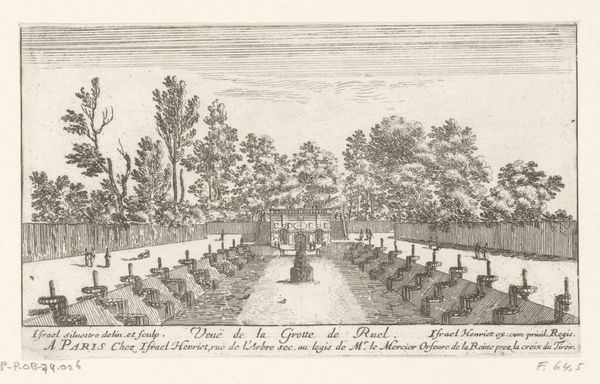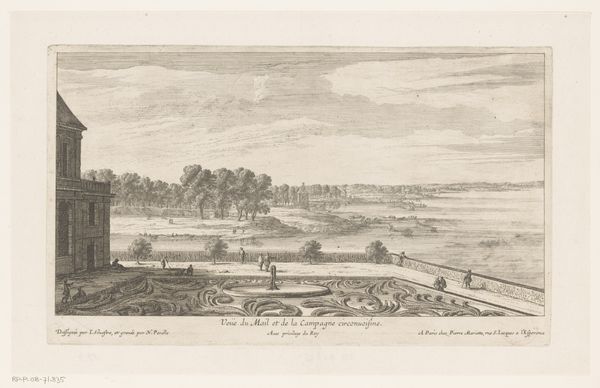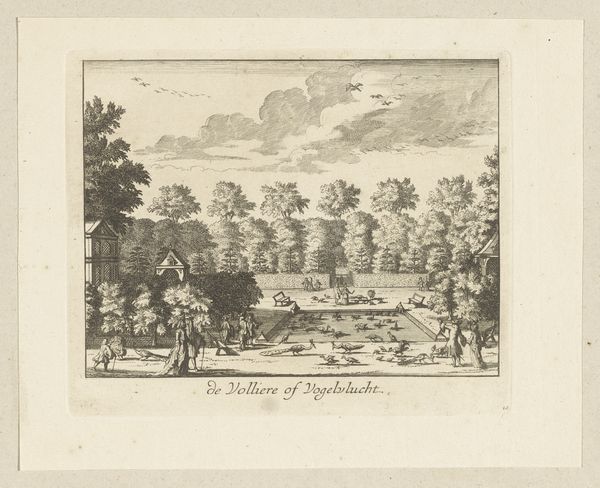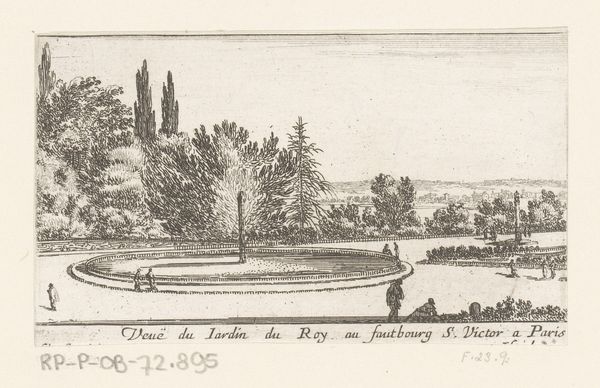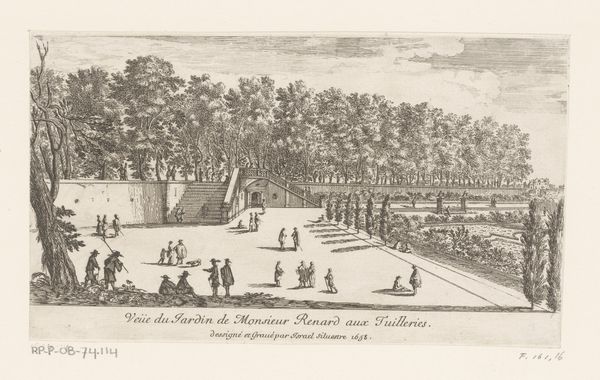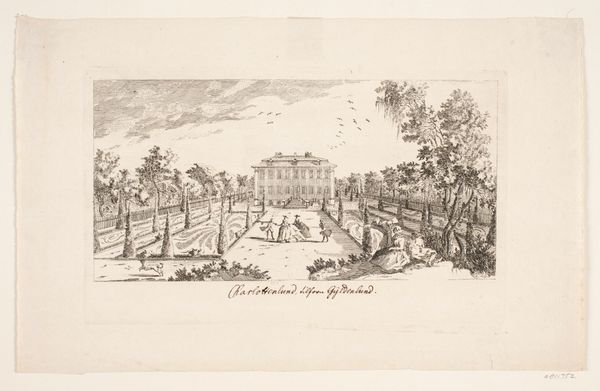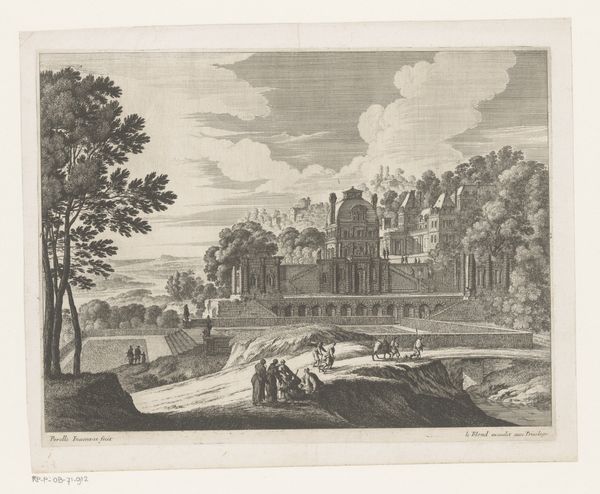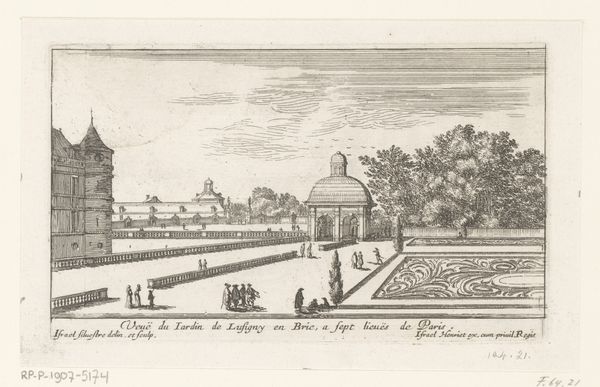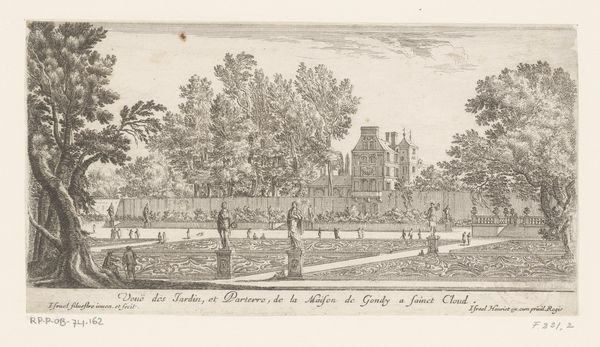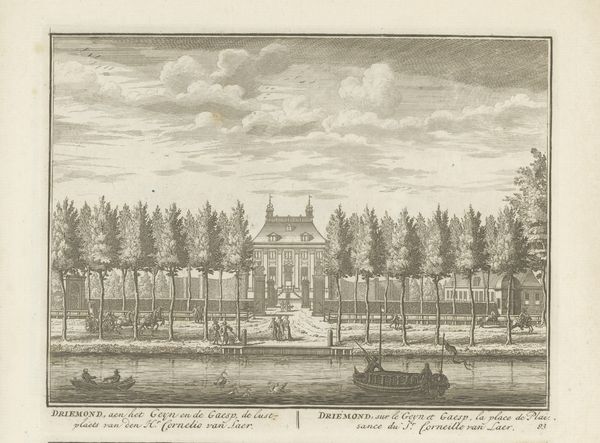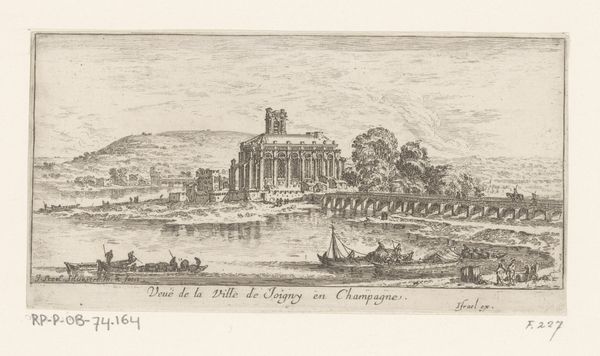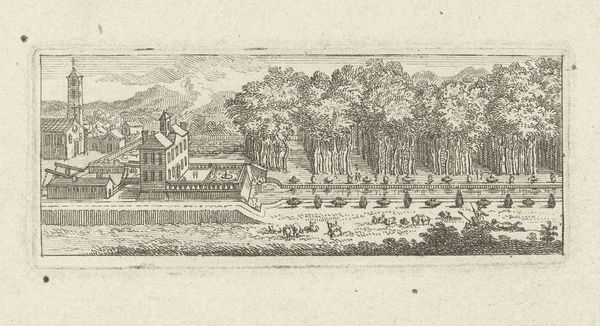
print, etching, engraving
#
baroque
# print
#
pen sketch
#
etching
#
landscape
#
line
#
cityscape
#
engraving
Dimensions: height 94 mm, width 166 mm
Copyright: Rijks Museum: Open Domain
Curator: So, what springs to mind when you look at this image? Editor: Ah, I'm instantly drawn in by the light and shadow, dancing together. It feels a little theatrical, wouldn't you say? Like a stage set waiting for players to arrive. It reminds me of carefree moments I used to have near botanical gardens and forests when I was a child, just running freely surrounded by friends. Curator: Well, this is an engraving from 1652 entitled "View of the Gardens of Saint Victor", created by Israel Silvestre. And, considering the artist’s prominent position as draftsman and engraver to the King, those theatrical allusions ring true in this historical context. Editor: Engraving, right. The level of detail is just… exquisite. Look at the gardens, the careful manicuring that evokes such discipline, and the architecture; it makes me question what’s happening just beyond what's in view? What kind of narrative can we give this space in a story? Curator: That’s the charm of landscape art in this period—it wasn’t simply about recording what was there but creating spaces of idealized harmony that mirrored societal ambitions. It served a particular political function of suggesting an idealized version of life in that location. I imagine viewers felt a great sense of national pride for the space. Editor: I can definitely sense that intentional composition and this almost pristine rendering, as if trying to suggest order above chaos. Still, there’s a strange energy, right? It’s calm and serene, yet I find my gaze darting across the etching, making up little vignettes in each segment. It almost creates a conversation on the value of chaos vs the value of imposed structural design. Curator: Interesting! I read the work somewhat differently. What is compelling to me are the figures in the work because in their stillness they stand to signal codes of behavior and class relations during that period in France. Think about these places as sites where power was not only performed but where particular identities were enforced and expressed. Editor: Huh. Well, there you have it—two perspectives sparked by just one detailed view! It's a piece that definitely invites further meditation. Curator: Absolutely. It’s a lens through which we can examine not just aesthetics but the underlying societal structures.
Comments
No comments
Be the first to comment and join the conversation on the ultimate creative platform.
